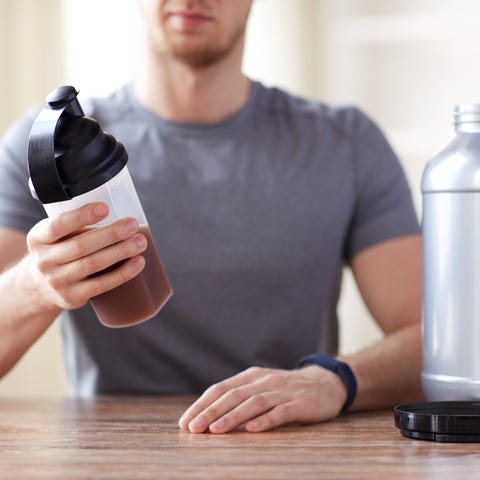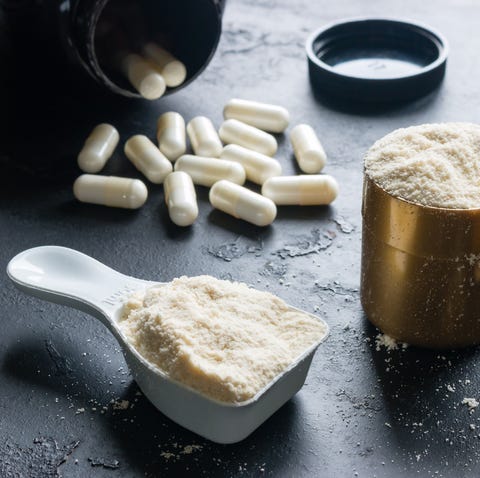I took creatine supplements back in high school so that I could look more muscled at summer pool parties. It worked.
And I started taking creatine supplements again 17 years later so that I would have the strength to heft my toddler. Times have changed—as have my reasons for taking creatine—but it still works.
As I’ve learned through Men’s Health, creatine supplements are safe and effective when taken according to correct dosages. And they are, in fact, one of the most studied supplements on the planet. But I’ve always wondered one thing about the strength-stoking powders and capsules: the loading phase of creatine.

Spin your tub of creatine to the back label and you’ll likely find language that goes a little like this: “Mix 1 scoop (5,000 mg) in water or your favorite beverage 3 to 4 times per day for the first 5 to 7 days. Do not exceed 5,000 mg per serving. For maintenance, take 1 serving (5,000 mg) immediately after training.”
This period of increased creatine ingestion during the first week is often called the “loading phase.”
So, what exactly? Does this avalanche of creatine do something magical to my muscles? If I don’t turbo-load the supplement is it ineffective? Or is this all a ploy by the supplement companies to have me ingesting more creatine than I need to and thereby buy more?
To help alleviate my confusion (self-imposed insanity?), I contacted Chris Mohr, Ph.D., R.D., a Men’s Health nutrition advisor and co-owner of Mohr Results, a nutrition consulting company.
What is the creating loading phase and does it work?
“Creatine loading is still recommended on the suggested use, but isn’t necessary,” Mohr wrote me. “While the loading phase is not dangerous or unhealthy, research suggests after 30 days, results from using creatine end up the same for strength gains. That said, if someone needed faster results (e.g., 5 days vs. 30 days) then the loading phase could be considered.”

In other words, if you needed to, say, look hulked for a high school pool party in a week, the loading phase might be a good idea. But if you’re a dad who is just looking for a little help schlepping around the kid, there’s no real need to creatine load.
What is creatine and how does it work?
Your body actually makes its own creatine, by way of your kidney and liver, after you eat meat. Your muscles then convert creatine into creatine phosphate, which is then generated into adenosine triphosphate (ATP), which your body uses for explosive exercise.

Complicated, yes, but important because creatine is stored. You can either push your creatine stores to their upper end by loading, or incrementally, by consistent smaller dosages.
Are there any side effects to creatine loading?
Personally, I’ve also found the creatine loading phase gift me with some unpleasant gut cramps, not to mention frequent bathroom breaks considering all the water I was drinking along with the supplement. So I was relieved to hear that I could back off from loading, at the blessing of Mohr, who has heard of similar complaints before.
There was one cautionary sentence Mohr did send along, however: “Also creatine won’t work without a solid nutrition plan and training.”
Somehow I’m not sure bending over to pick up and put down my son qualifies as “training.”
Source: Read Full Article
